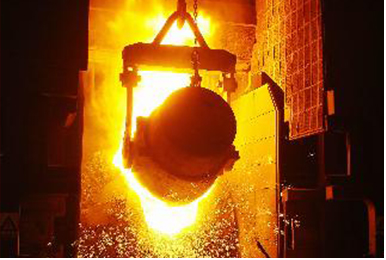Aug . 14, 2024 04:41 Back to list
The Study and Innovations in the Processing of Lightweight Metal Alloys for Modern Applications
Metallurgy of the Light Metals
The metallurgy of light metals, primarily aluminum, magnesium, and titanium, plays a pivotal role in modern engineering and manufacturing due to their unique properties and applications. These metals are classified as light because of their low density, making them ideally suited for industries where weight reduction is crucial, such as aerospace, automotive, and construction.
Aluminum is the most widely used light metal, known for its excellent corrosion resistance, thermal and electrical conductivity, and formability. Its metallurgical transformation starts with bauxite, an ore from which alumina is extracted through the Bayer process. The resulting alumina is then reduced to aluminum metal via the Hall-Héroult process, which involves electrolysis. This process is energy-intensive, but advancements in technology have led to more efficient and sustainable methods of aluminum production.
Metallurgy of the Light Metals
Magnesium is another important light metal, noted for its exceptional weight-to-strength ratio. The extraction of magnesium typically involves the electrolysis of seawater or brine. The resulting magnesium can then be cast, rolled, or extruded for various applications. Its lightweight properties make it a preferred choice in automotive manufacturing, where reducing vehicle weight can lead to improved fuel economy and lower CO2 emissions. However, magnesium also presents challenges, such as its susceptibility to corrosion and its lower melting point compared to aluminum.
metallurgy of the light metals

The metallurgical processes for magnesium involve significant care to prevent oxidation and degradation, as magnesium reacts readily with atmospheric moisture. Techniques such as alloying with elements like zirconium and rare earth metals help improve the mechanical properties and corrosion resistance of magnesium-based materials. As a result, magnesium alloys have found applications in high-performance automotive parts, electronic casings, and even aerospace components.
Titanium, while slightly denser than aluminum and magnesium, offers unrivaled strength and resistance to heat and corrosion, making it invaluable in critical applications, particularly in the aerospace and biomedical fields. The production of titanium is primarily through the Kroll process, where titanium dioxide is reduced with magnesium at high temperatures. This method, however, makes titanium expensive compared to aluminum and magnesium, which limits its widespread use.
Titanium alloys are often used in applications requiring high strength-to-weight ratios and stability at elevated temperatures, such as turbine engines and chemical processing equipment. Moreover, titanium's biocompatibility makes it an ideal material for medical implants and devices.
In conclusion, the metallurgy of light metals encompasses a broad range of processes and applications that significantly influence technology and engineering. As industries continue to seek enhanced performance, efficiency, and sustainability, the development and refinement of aluminum, magnesium, and titanium alloys will remain a crucial area of research and innovation. Continuous advancements in extraction, processing, and alloying techniques promise to unlock the full potential of these remarkable materials, enabling new possibilities in various fields ranging from transportation to healthcare.
-
Eco-Friendly Granule Covering Agent | Dust & Caking Control
NewsAug.06,2025
-
Fe-C Composite Pellets for BOF: High-Efficiency & Cost-Saving
NewsAug.05,2025
-
Premium Tundish Covering Agents Exporters | High Purity
NewsAug.04,2025
-
Fe-C Composite Pellets for BOF | Efficient & Economical
NewsAug.03,2025
-
Top Tundish Covering Agent Exporters | Premium Quality Solutions
NewsAug.02,2025
-
First Bauxite Exporters | AI-Optimized Supply
NewsAug.01,2025
